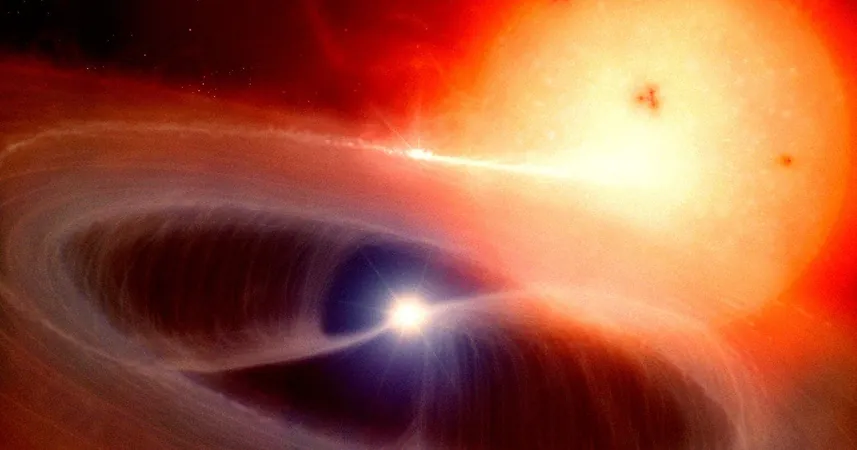
Astronomers Discover Bizarre Exoplanet with Reverse Orbit!
2025-05-25
Author: Yu
Unveiling the Mysteries of Nu Octantis
A team of astronomers has unveiled an astonishing discovery: a baffling exoplanet that exhibits some truly peculiar behavior as it orbits not one, but two parent stars!
This celestial oddball, located in the Nu Octantis system a staggering 72 light-years away, has drawn attention due to its sheer size—twice that of Jupiter! First discovered in 2004, initial skepticism surrounded its existence given its astonishingly close proximity to its twin stars.
Groundbreaking Theory Revealed
In an exciting new paper published in the journal *Nature*, an international team of researchers has proposed a jaw-dropping theory that challenges conventional wisdom about planet formation. They suggest that this planet orbits in a retrograde direction, meaning it travels around one of its stars in the opposite way compared to the star's own rotation.
"The existence of this planet has been controversial because it defies established norms; we typically expect planets to form in a prograde orbit alongside their stars," explained coauthor Man Hoi Lee, a professor at the University of Hong Kong.
An Orbital Tightrope Act!
This planet’s trajectory is even more fascinating—scientists propose that it orbits in a tight space between the two stars, performing a precarious dance each time it completes its orbit. Such erratic movements highlight the complexities inherent in multi-star systems and indicate a wealth of knowledge still to be uncovered.
"This discovery encourages a broader exploration of stellar and planetary scenarios in terms of their formation and evolution," remarked Manfred Cuntz, a professor at the University of Texas at Arlington, who was not part of the study.
A Dying Star and a Young Planet?
Adding to the intrigue is the nature of one of the stars—it's a white dwarf, which signifies that it is at the tail end of its life cycle, making the Nu Octantis system a remarkable and rare find. The system itself is estimated to have formed around 2.9 billion years ago.
Interestingly, the planet likely emerged later, potentially having altered its unique orbit when one of the stars metamorphosed into a white dwarf or by gathering mass from the dying star.
The Quest for Knowledge Continues
As researchers strive to unlock the secrets behind this bizarre planetary behavior, they emphasize the need for more observations. This includes studying similar binary star systems like HD 59686, which includes a gas giant six times the mass of Jupiter!
The cosmos holds numerous enigmas waiting to be deciphered, and with each discovery, we inch closer to understanding the fascinating mechanics of stellar and planetary systems.


 Brasil (PT)
Brasil (PT)
 Canada (EN)
Canada (EN)
 Chile (ES)
Chile (ES)
 Česko (CS)
Česko (CS)
 대한민국 (KO)
대한민국 (KO)
 España (ES)
España (ES)
 France (FR)
France (FR)
 Hong Kong (EN)
Hong Kong (EN)
 Italia (IT)
Italia (IT)
 日本 (JA)
日本 (JA)
 Magyarország (HU)
Magyarország (HU)
 Norge (NO)
Norge (NO)
 Polska (PL)
Polska (PL)
 Schweiz (DE)
Schweiz (DE)
 Singapore (EN)
Singapore (EN)
 Sverige (SV)
Sverige (SV)
 Suomi (FI)
Suomi (FI)
 Türkiye (TR)
Türkiye (TR)
 الإمارات العربية المتحدة (AR)
الإمارات العربية المتحدة (AR)